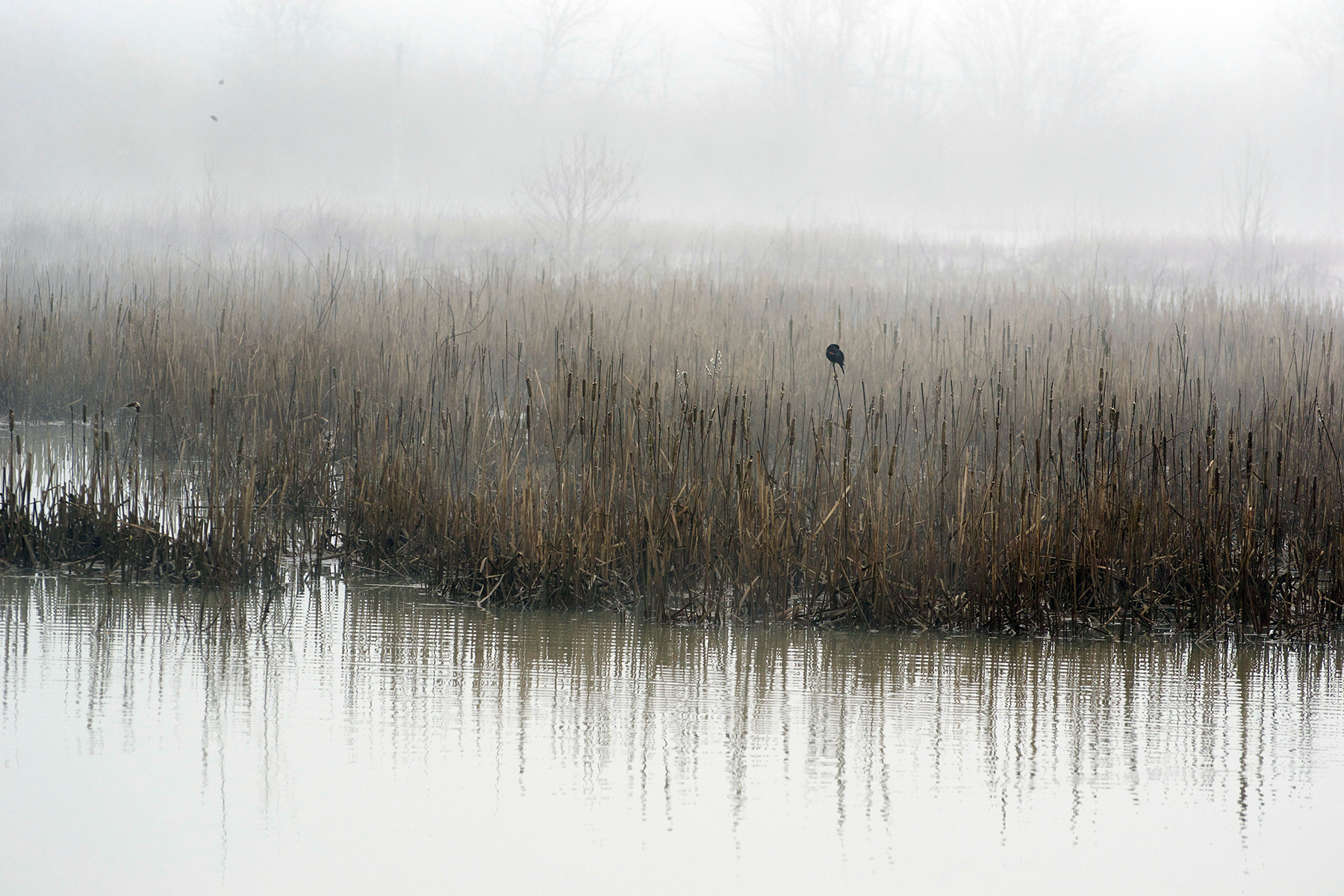Don the down-coat. Pack the parka. Meet the early morning mist.




If you are lucky – and I was early Monday morning – you’ll see some wispy clouds evaporate over the water, hear the different birdcalls and have the wetlands practically to yourself.

Well, the birds were naturally on location. Pretty active, too, fighting the lingering cold and scoring on breakfast. Red-tailed hawk preening…




The diffuse light blocked out the harshness of the world and gave rise to thoughts about peace against the backdrop of war.

And talking about war and peace, have you ever considered why so few birds are equipped with weapons? I mean, snakes have fangs, tigers have teeth, elephants, narwhales and walruses have tusks, deer have antlers, bees have stingers – a whole arsenal of martial gear can be found in nature. The occasional evening spent in front of PBS’s NOVA programs about animal warfare confirms this.




Scientists have devoted their lives to figuring out the evolutionary pressure behind this all, notably Douglas Emlen, who wrote one of the best overviews in the field, Animal Weapons, the Evolution of Battle. Here is a short review of the book which includes this:
“Throughout the book, Emlen’s demonstrations of the many parallels between human and animal weapons are fascinating, even when the possibilities are frightening. “I stand awed and shaken,” he writes, “thrilled by the parallels and, at the same time, terrified by the prospects.”
Back to birds, though, who have not participated in the arms race. The reason? They practically get all they want or need by flashing colors, elaborate dancing, song competition and only occasional claws, pecking or spores. (I’m summarizing what I read here.)

The REAL reason? Flight. Anything that flies has to worry about weight. Flying consumes much more energy than movement on the ground or in water, and energy need increases with added weight, even tiny bits. We have indeed mathematical models of flight that spell out in detail how leg or wing spurs, no matter how small, increase fuel cost in untenable ways (given that fuel acquisition itself – searching for food – costs energy as well,) particularly for smaller birds.
(A funky comparison from the article: United Airlines started printing its inflight magazine on lighter paper to reduce the weight of a typical flight by about 11 pounds, or 0.01% of an airplane’s empty weight. Through this tiny decrease, the company cut its annual fuel use by 170,000 gallons, saving US$290,000 yearly. Think through this with today’s news about gas prices….)



Spurs, then, are primarily found on land fowl and in fewer than 2% of all avian species. And beaks used for fighting are rare as well, given that any injury to them might compromise the ability to feed – a direct threat to survival. Yes, some raptors fight with their talons, but overall, we are seeing a peaceable kingdom, if interrupted by screaming matches over territorial rights..
Evolution, you botched this. Should have provided mankind with wings!!

Swallows already returned, harbingers of renewal.



Killdeer twittered.

Hummingbird glowed.

The morning softness continued, sun broke through clouds.

Later the rain set in. What better reminder of “teaching our troubled souls… to heal.”
To the Rain
Mother rain, manifold, measureless,
falling on fallow, on field and forest,
on house-roof, low hovel, high tower,
downwelling waters all-washing, wider
than cities, softer than sisterhood, vaster
than countrysides, calming, recalling:
return to us, teaching our troubled
souls in your ceaseless descent
to fall, to be fellow, to feel to the root,
to sink in, to heal, to sweeten the sea.
“To the Rain” copyright © 2018 by Ursula K. Le Guin. First appeared in So Far So Good: Poems 2014-2018, published by Copper Canyon Press in 2018. Reprinted in Poetry Foundation by permission of Curtis Brown, Ltd.

Brahm’s Rain Sonata is today’s musical joy.






Sara Lee Silberman
Lovely and interesting. As always.